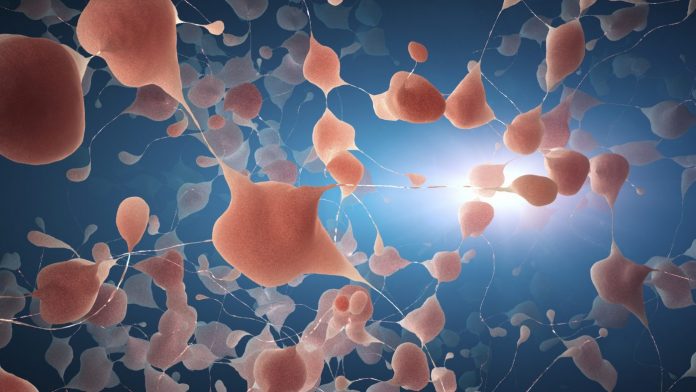
Scientists at the Stowers Institute for Medical Research have identified the beginning structure of the amyloid protein aggregate responsible for causing Huntington’s disease and are proposing a potential treatment approach.
Huntington’s disease is an inherited condition causing neuronal death in essential parts of the brain, leaving patients unable to control their bodily movements and complete daily tasks. The culprit behind the disease is a mutation in the gene coding for a protein called huntingtin—causing it to aggregate and kill nerve cells.
Reporting in eLife, scientists have now deciphered the protein structure involved in the first step in huntingtin aggregation. According to the researchers, the structure, called “nucleus” is formed within a single protein molecule and leads to the huntingtin protein containing excessive repeats of an amino acid known as glutamine and abbreviated as Q. This causes the protein to misfold and damage the cell.
“For three decades, we’ve known that Huntington’s and related fatal diseases occur when proteins contain more than around 36 Qs in a row, causing them to form chains of proteins in the brain, but we didn’t know why. We’ve now figured out what the first link in the chain looks like, and, in doing so, have discovered a new way to stop it,” said associate investigator Randal Halfmann, PhD, in a press statement.
In order to identify the structure of the nucleus, the team developed a technique called Distributed Amphifluoric Förster Resonance Energy Transfer (DAmFRET), allowing them to visualize how a protein self-assembles in single cells and pinpoint the rate-limiting amyloid-forming event.
Using DAmFRET the team tested several different patterns of Qs in order to identify the minimal amount of glutamine repeats required to kickstart the nucleation process. The structure identified by the scientists, contained a bundle of four strands each with three Q repeats in specific locations.
“Prior work in test tubes supports a monomeric nucleus, but this model has been controversial,” Halfmann explained. “We now have strong evidence that 36 Qs is the critical number for nucleation to happen in single protein molecules, and moreover, that this is how it happens inside living cells.”
Apart from uncovering the initiating structure of the huntingtin aggregate, the researchers showed that the nucleus was only able to form in isolated molecules of the protein. By clumping the proteins together in in vitro experiments, the amyloid structures were unable to form, implicating a potential therapeutic target for Huntington’s disease.
“The emerging paradigm is that everything follows from a single event, a spontaneous change in protein shape,” Halfmann concluded in a press statement. “That event ignites the chain reaction for amyloids that kill cells and may provide critical insight into how amyloids cause disease.”
